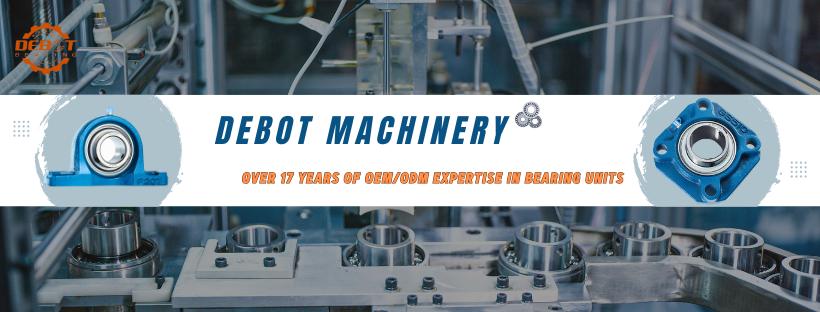


2025- 05- 14
In modern agricultural machinery, bearings are essential components that are widely used in equipment such as tractors, seeders, harvesters, and balers. Proper selection and correct usage of agricultural machine bearings not only extend the lifespan of the machinery but also significantly improve agricultural production efficiency. This article will detail the types, usage methods, and selection suggestions for agricultural machine bearings to help you make more informed decisions.

Main Types of Agricultural Machine Bearings
1. Deep Groove Ball Bearing
This is a commonly used bearing type with a simple structure and low cost. It is suitable for radial loads and can also withstand some axial loads. It is widely used in low-speed and moderate-load agricultural machinery, such as motors and transmission systems.
2. Tapered Roller Bearing
Tapered roller bearings are suitable for combined loads (radial and axial). They are often used in high-load applications such as tractor hubs and differentials.
3. Self-aligning Ball Bearing
Self-aligning ball bearings have the ability to automatically align and are effective in applications where shaft alignment is difficult or the bearing housing rigidity is low. This type of bearing is typically used in agricultural machinery transmission systems, particularly in low-load, low-speed situations.
4. Cylindrical Roller Bearing
Cylindrical roller bearings have strong load-bearing capacity and are commonly used in agricultural machinery components that operate under high loads and high speeds, such as harvesters and threshers.
5. Pillow Block Bearing
Pillow block bearings consist of an insert bearing (a bearing with a sealing structure) mounted in a rigid housing to form a complete mounted bearing unit. These bearings are easy to install, adjust, and replace, and are commonly used in seeders, tillers, and drive shafts. They are designed to perform well in dusty and high-vibration environments. Pillow block bearings come in different housing types, such as P-type (vertical), F-type (flanged), and S-type (square).
Correct usage of bearings is crucial for ensuring the stable operation of agricultural machinery. Here are some key usage tips:
1. Regular Lubrication
Bearings should be regularly lubricated, especially for seasonal agricultural equipment. Before use, ensure the bearings are fully lubricated to reduce wear and extend their lifespan.
2. Dust Sealing
The working environment in agricultural machinery is often dusty and wet. It is recommended to choose bearings with sealing structures and install additional dust covers or seals to prevent contaminants from damaging the bearings.
3. Avoid Impact Loads
Bearings should not be exposed to overloads, impacts, or sudden starts and stops, as these conditions increase wear and the risk of failure. This ensures long-term stability and performance of agricultural machinery.
4. Proper Installation
Use appropriate tools to install bearings and avoid striking them directly with hammers, as this can damage the bearing races and reduce their precision.
Choosing the right bearing not only affects the performance of agricultural machinery but also influences operating costs and maintenance frequency. When selecting bearings, consider the following points:
1. Choose the Right Bearing Type Based on Usage
Select the appropriate bearing structure based on the specific part of the machinery. For example, use tapered roller bearings for hubs and pillow block bearings for shafts. Choose the right bearing type according to the load conditions of each part.
2. Consider the Working Environment
If the agricultural machinery operates in a humid or dusty environment, prioritize bearings with good dustproof and waterproof performance to ensure stable operation in harsh conditions.
3. Focus on Brand and Quality
Choose well-known brands or manufacturers with guaranteed quality to ensure bearing durability and reliability. High-quality bearings reduce the frequency of maintenance and replacements, lowering long-term costs.
4. Check Technical Parameters
Ensure that the bearing’s load capacity, speed limit, and service life match the operating conditions of the equipment. Review technical data sheets to confirm that the bearing meets your machinery’s specific requirements.
5. Consider After-sales Service
For large agricultural machines that operate frequently, it is essential to choose a supplier with strong after-sales service capabilities. Timely technical support and spare parts supply are critical for resolving any failures quickly.
Though small, bearings are essential components that ensure the efficiency and reliability of agricultural machinery. Understanding the types of agricultural machine bearings, their proper usage, and selection tips will help improve equipment performance and reduce maintenance costs. Choosing the right bearings provides strong support for the efficient and stable operation of agricultural machinery. If you are looking for high-quality, reliable agricultural machine bearings, feel free to contact us. We will provide you with professional product support and customized services.
This version has been revised and translated accurately for professional use. If you need any further adjustments, feel free to let me know!
